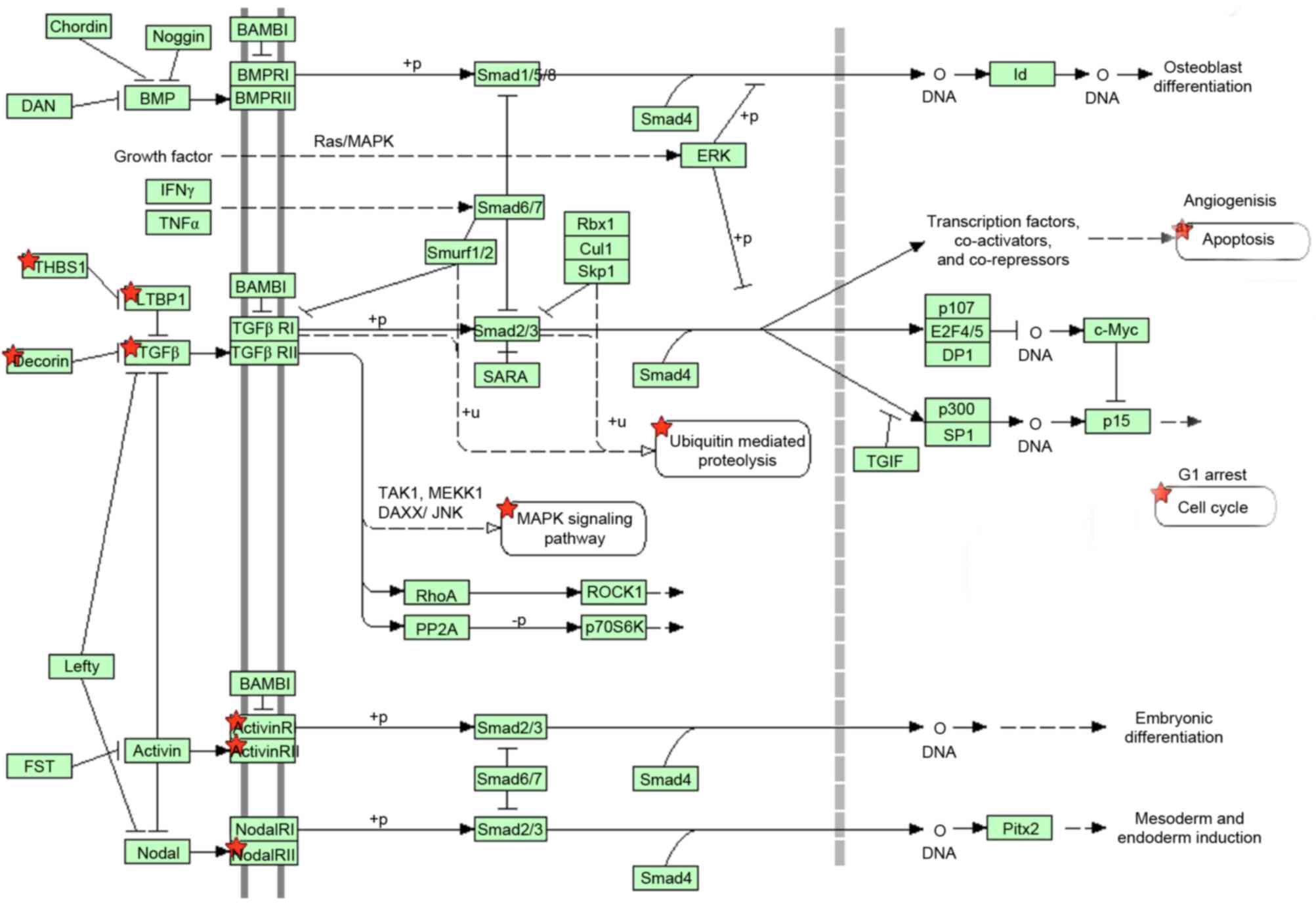Differences in molecular regulation between osteochondroma and bizarre parosteal osteochondromatous proliferation
- Authors:
- Published online on: May 25, 2017 https://doi.org/10.3892/mmr.2017.6634
- Pages: 801-805
-
Copyright: © Zhou et al. This is an open access article distributed under the terms of Creative Commons Attribution License.
Metrics: Total
Views: 0 (Spandidos Publications: | PMC Statistics: )
Total PDF Downloads: 0 (Spandidos Publications: | PMC Statistics: )
Abstract
The differences in molecular mechanisms between osteochondroma and bizarre parosteal osteochondromatous proliferation (BPOP) remain to be fully elucidated. In the present study, the differentially expressed genes between BPOP and osteochondroma were obtained from the Gene Expression Omnibus online database, and the associations among these genes were analyzed using the Database for Annotation, Visualization, and Integrated Discovery (DAVID) online bioinformatics software. The results revealed several differentially expressed genes between human BPOP and osteochondroma. These differentially expressed genes were also enriched in different subgroups based on the analysis using DAVID online software, including ‘transforming growth factor β receptor signaling pathway’, ‘BMP signaling pathway’, ‘Wnt receptor signaling pathway’, ‘response to chemical stimulus’, ‘regulation of inflammatory response’, ‘response to stress’, ‘glycosaminoglycan binding’, ‘polysaccharide binding’, ‘extracellular matrix structural constituent’ and ‘growth factors binding’. Taken together, these findings led to the conclusion that different gene regulatory mechanisms exist between BPOP and osteochondroma. Environmental stimulation and inflammation may contribute to BPOP or osteochondroma, and differences in extracellular matrix may contribute to differences in biological characteristics between BPOP and osteochondroma.














